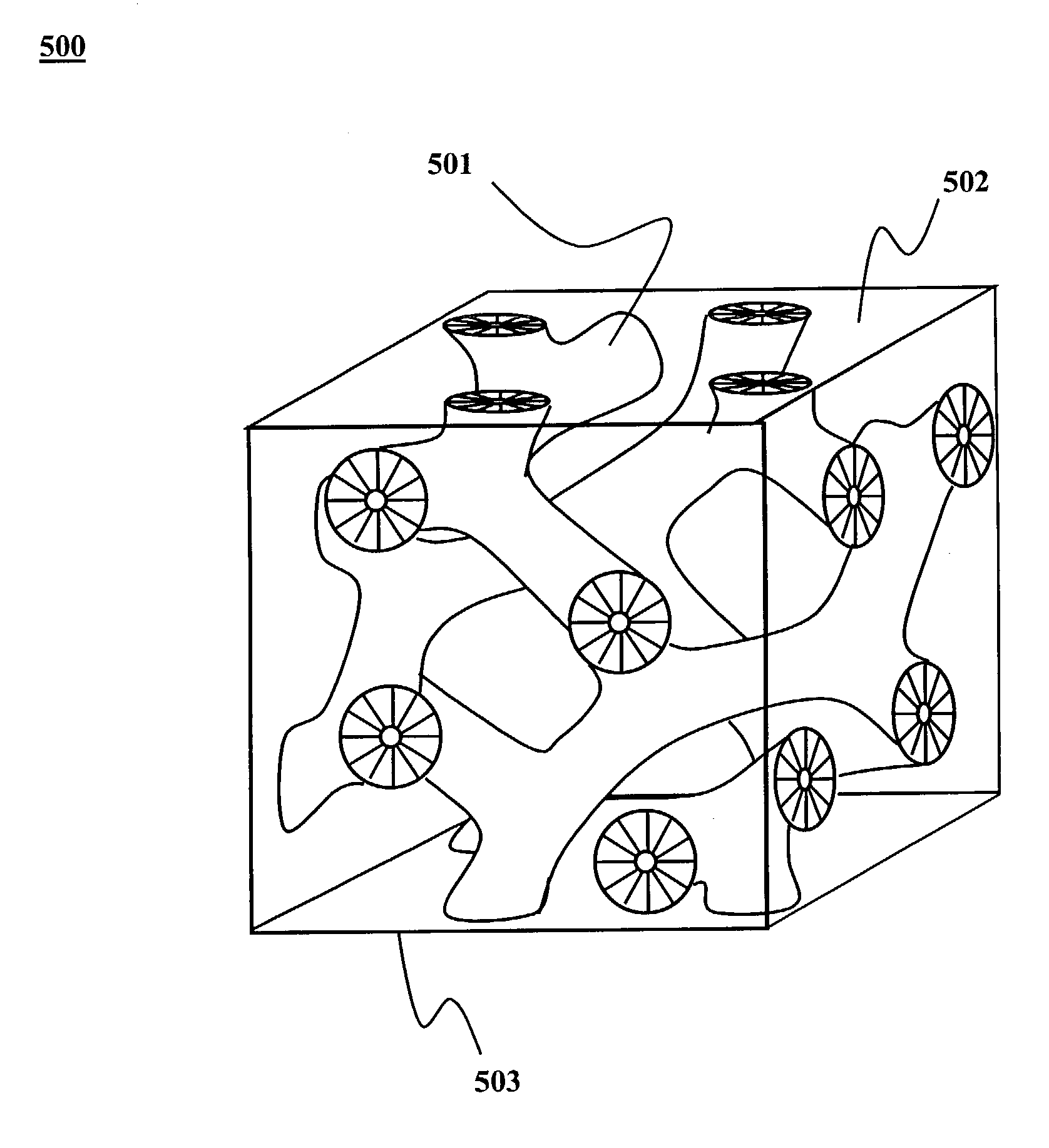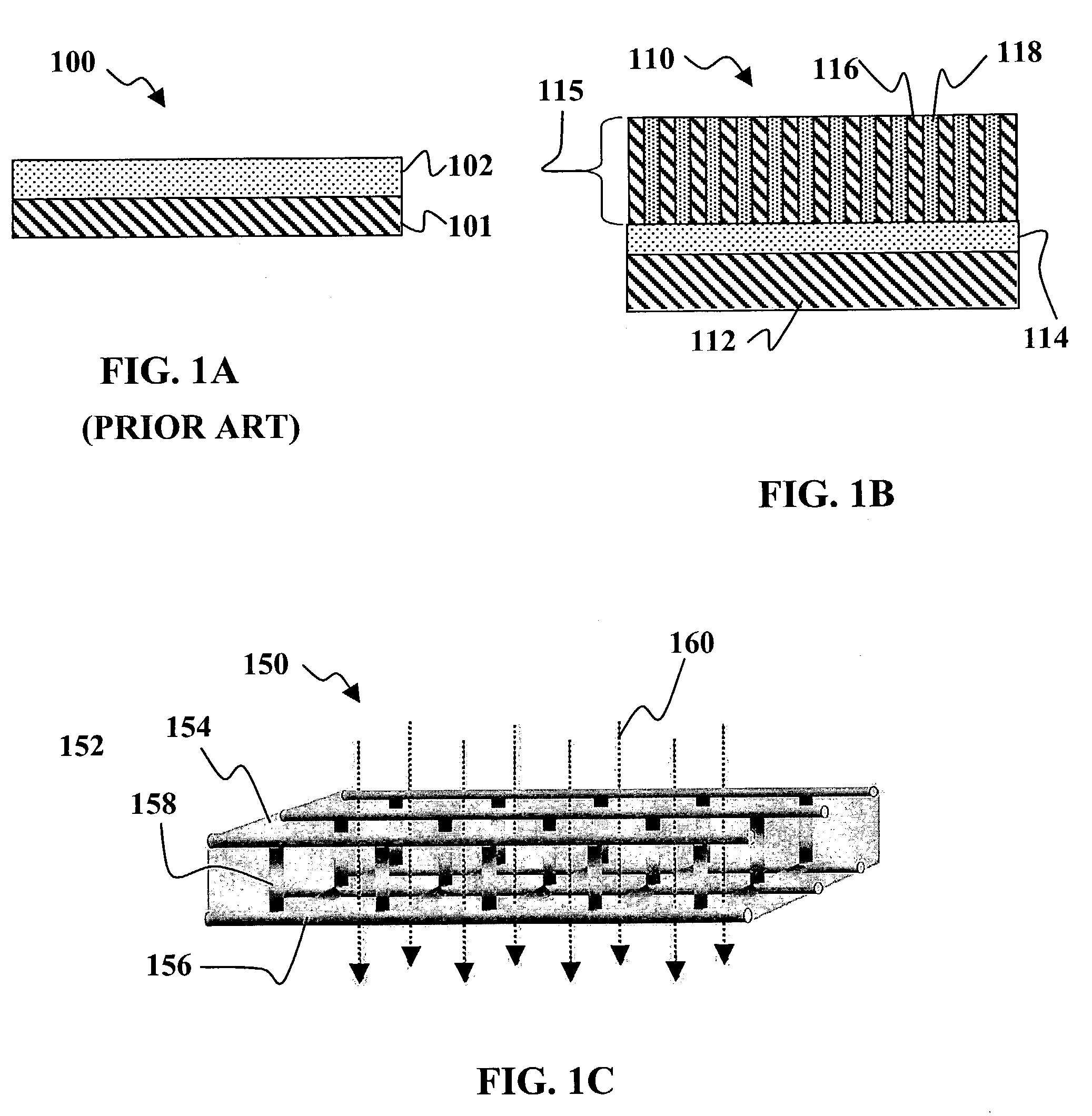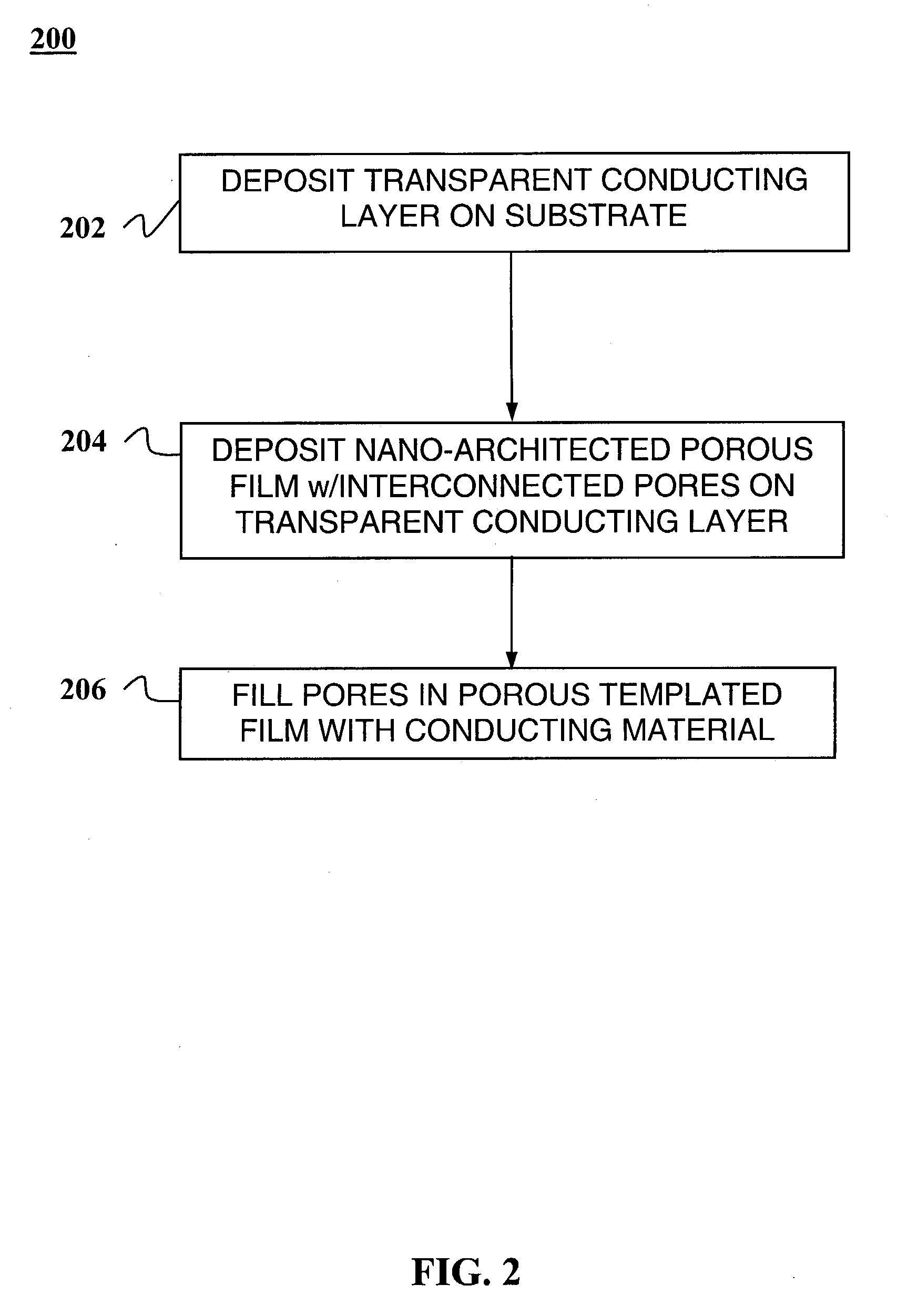Nanostructured transparent conducting electrode
a transparent, conducting electrode technology, applied in the field of optoelectronic devices, can solve the problems of increasing the cost of manufacturing, so as to achieve the effect of relatively inexpensive and large-scale production
- Summary
- Abstract
- Description
- Claims
- Application Information
AI Technical Summary
Benefits of technology
Problems solved by technology
Method used
Image
Examples
Embodiment Construction
Contents
I. Glossary
II. General Overview
III. Nanostructured Transparent Conducting Electrodes
IV. Fabrication of Nanostructured Transparent Conducting Electrodes
V. Devices using Nanostructured Transparent Conducting Electrodes
VI. Alternative Embodiments
VII. Conclusion
I. GLOSSARY
[0031]The following terms are intended to have the following general meanings as they are used herein:
Device: An assembly or sub-assembly having one or more layers of material.
Semiconductor: As used herein, semiconductor generally refers to a material characterized by an electronic bandgap typically between about 0.5 eV and about 3.5 eV.
[0032]Hole-Acceptor, Electron-Acceptor: In the case of semiconductor materials, hole-acceptor and electron-acceptor are relative terms for describing charge transfer between two materials. For two semiconductor materials wherein a first material has a valence band edge or highest occupied molecular orbital (HOMO) that is higher than the corresponding valence band edge or HOMO fo...
PUM
| Property | Measurement | Unit |
|---|---|---|
| diameters | aaaaa | aaaaa |
| diameters | aaaaa | aaaaa |
| diameter | aaaaa | aaaaa |
Abstract
Description
Claims
Application Information
 Login to View More
Login to View More - R&D
- Intellectual Property
- Life Sciences
- Materials
- Tech Scout
- Unparalleled Data Quality
- Higher Quality Content
- 60% Fewer Hallucinations
Browse by: Latest US Patents, China's latest patents, Technical Efficacy Thesaurus, Application Domain, Technology Topic, Popular Technical Reports.
© 2025 PatSnap. All rights reserved.Legal|Privacy policy|Modern Slavery Act Transparency Statement|Sitemap|About US| Contact US: help@patsnap.com



